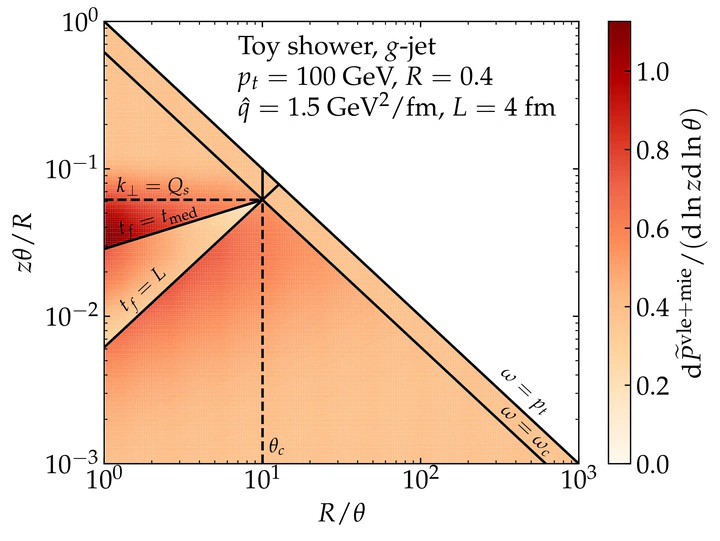Dynamically groomed jet radius in heavy-ion collisions

Abstract
We explore the ability of a recently proposed jet substructure technique, dynamical grooming, to pin down the properties of the quark-gluon plasma formed in ultrarelativistic heavy-ion collisions. In particular, we compute, both analytically and via Monte Carlo simulations, the opening angle $\theta_g$ of the hardest splitting in the jet as defined by dynamical grooming. Our calculation, grounded in perturbative QCD (pQCD), accounts for the factorization in time between vacuum-like and medium-induced processes in the double logarithmic approximation. We observe that the dominant scale in the $\theta_g$ distribution is the decoherence angle $\theta_c$ which characterizes the resolution power of the medium to propagating color probes. This feature also persists in strong coupling models for jet quenching. We further propose for potential experimental measurements a suitable combination of the dynamical grooming condition and the jet radius that leads to a pQCD-dominated observable with a very small sensitivity ($\lesssim 10\%$) to medium response.
Publication
Phys.Rev.D 105 (2022) 11, 114046